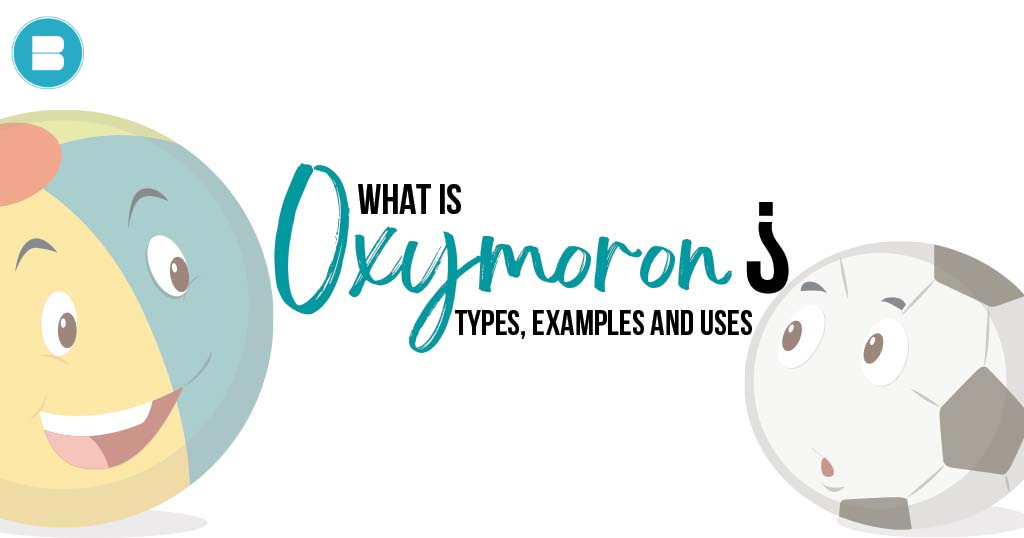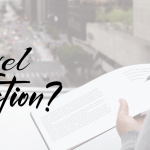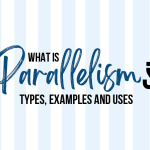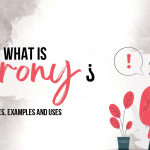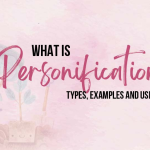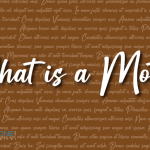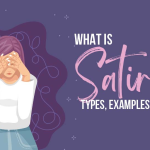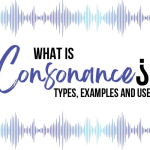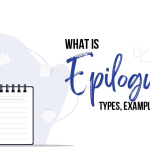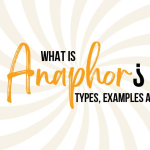Many people have a doubt “What is Oxymoron“? An oxymoron is a literary device in which two seemingly contradictory words or concepts are combined in order to create a rhetorical effect.
The combination of the two words often has a paradoxical or incongruous effect and is used to create emphasis or make a statement more powerful. Some common examples of oxymorons include “jumbo shrimp,” “deafening silence,” and “sweet sorrow.”
Read: Learn what is Alliteration? Definition, Types, & Uses of Alliteration.
The term “oxymoron” comes from the Greek “oxys” and “moros,” which mean “sharp” and “dull,” respectively. Oxymorons are commonly used in literature, poetry, and everyday speech as a means of emphasising a point or creating irony.
They can be used to add depth and complexity to a work and to challenge readers or listeners to think more critically about the meaning of the words and phrases being used.
“Ordinary riches can be stolen, but real riches cannot.”
– Oscar Wilde
For example, in the quote above, the phrase “ordinary riches” contradicts itself, as riches by definition are not ordinary. It implies that there are two types of riches: one that is ordinary and can be stolen, and one that is real and cannot be stolen.
This quote is pointing out that material possessions, which are often considered to be a form of wealth, can be taken away by others. The speaker is suggesting that true riches, or wealth that cannot be taken away, are something deeper or more meaningful than material possessions.
Some possible examples of these deeper or more meaningful riches could be one’s inner strength, knowledge, wisdom, or personal relationships. The speaker implies that true richness can’t be stolen but rather is always with you; it’s intrinsic.
This quote not only emphasises the difference between material and inner wealth but also serves as a reminder that true wealth can’t be taken away but also has to be cherished and cultivated.
You may also read: List of Top 10 Nikita Singh Books of All Time
What is Oxymoron? Types of Oxymoron.
An oxymoron is a figure of speech in which two words with opposing or contradictory meanings are combined to create a rhetorical effect. There are several types of oxymoron, including:
- Antithetic oxymoron: An antithetic oxymoron is a figure of speech in which two words or phrases with opposite or contradictory meanings are combined to create a rhetorical effect. Some examples of antithetical oxymorons include:
- “ill health” (meaning poor or bad health)
- “quiet riot” (meaning a peaceful demonstration or a peaceful uprising)
- “Pale fire” (meaning a weak or insignificant flame)
- Syntactic oxymoron: A syntactic oxymoron is a type of oxymoron in which two words or phrases that are syntactically incongruous are combined to create a rhetorical effect. Some examples of syntactic oxymorons include:
- “The living dead” (meaning people who are alive but have a zombie-like appearance)
- “the sound of silence” (meaning a silence so profound that it can be heard)
- “The frozen flame” (meaning a flame that is cold)
- Verbal oxymoron: A verbal oxymoron is a type of oxymoron in which a word or phrase is used that is self-contradictory or has conflicting connotations. These types of oxymorons often use words with multiple meanings or different connotations to create a rhetorical effect. Some examples of verbal oxymorons include:
- “Cruel kindness” (meaning showing kindness in a harsh or harmful way)
- “predictably unpredictable” (meaning something that is both able to be predicted and yet impossible to predict)
- “Genuine fake” (meaning something that is not authentic but is presented as such)
- Situation oxymoron: A situation oxymoron is a type of oxymoron in which an action or situation is contradictory or absurd. These types of oxymorons often occur in everyday life and can be used to create a sense of irony or to point out the absurdity of a situation. Some examples of situational oxymorons include:
- “Selling ice in the Arctic” (meaning trying to sell something that is abundant and easily obtainable in an area)
- “a silent lecture” (a lecture that’s supposed to be listened to but with no sound)
- “a dry swim” (swimming without getting wet)
- Conceptual oxymoron: A conceptual oxymoron is a type of oxymoron in which two concepts that cannot coexist are combined to create a rhetorical effect. These types of oxymorons often involve combining abstract ideas or concepts in a way that is incongruous or impossible. Some examples of conceptual oxymorons include:
- “a square circle” (meaning something that cannot exist)
- “a married bachelor” (a man who is married but still considered a bachelor)
- “a transparent secret” (a secret that is open and visible to everyone)
- Paradoxical oxymoron: A paradoxical oxymoron is a combination of words or a phrase that contains elements that contradict each other but still make sense. It’s a special kind of oxymoron that combines two statements that seem contradictory, yet they can both be true at the same time. Some examples of paradoxical oxymorons include:
- “Less is more” (meaning that by having less of something, you actually have more of it)
- “The end is the beginning” (meaning that the end of one thing is also the start of another)
- “to be and not to be” (meaning the existential dilemma of life and death)
Some examples of oxymorons in literature can be found in literature, poetry, and popular phrases, such as “wise fool,” “sweet sorrow,” and “the only constant is change.”
These phrases often provide insight into complex emotions or ideas and help to convey them in a more powerful way.
You may also like: How to Publish a Book | Publish Your Book | BlueRoseOne
How to write the perfect oxymoron for your next book
When writing an oxymoron, it’s important to consider the context and tone of the piece. The use of oxymorons can add complexity and depth to the writing and convey complex emotions or ideas in a more powerful and evocative way.
However, it’s essential to use them sparingly, as overusing oxymorons can make the writing seem confusing or contrived.
Here are some tips for writing an oxymoron:
- Start by identifying the emotions or ideas you want to convey. Oxymorons can help express complex feelings or ideas in a more powerful and evocative way, but they should not be used just for the sake of using them.
- Think about the context and tone of the piece. Oxymorons can add humor, irony, or a sense of paradox to the writing, but it’s essential to consider how they will fit in with the overall tone of the piece.
- Consider the placement of the oxymoron: The placement of the oxymoron in a sentence or phrase can change its impact. For example, an oxymoron placed at the end of a sentence can add a sense of surprise, while an oxymoron placed in the middle of a sentence can add a sense of irony.
- Choose your words carefully. A well-chosen word or phrase can create a powerful oxymoron, but a poorly chosen one can make the writing seem contrived.
- Revise and edit your work. As you revise, consider if the oxymoron you have used works well and is effective in conveying the intended meaning. Make sure they are well integrated into the text and easy to understand.
You may also like: Top 10 Real Life Stories to Read Online
Remember, even if an oxymoron makes the text more complex, it is meant to be understood by readers. So, always keep the readers in mind while using an oxymoron, and make sure they are not making the text harder to comprehend.
I hope this was useful for you to understand the imaginative reality. So, the next time you see an oxymoron, you’ll be able to spot and write it.
Happy Reading!

